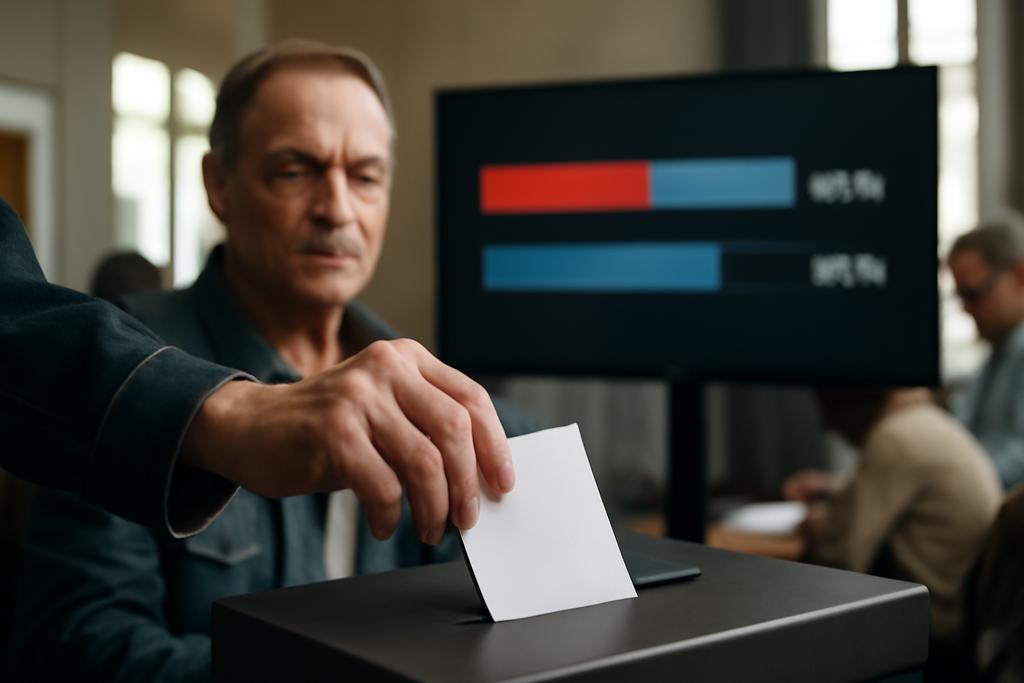The Echo Chamber Effect, Amplified
Imagine a voting system where, as you cast your ballot, you’re simultaneously shown the running tally. Not just the final results, but the live, dynamic shift in votes. That’s the core question explored in a fascinating new study from the University of Chinese Academy of Sciences, led by Yanting Wang. Their research uses a novel model to show how real-time information about voting trends can profoundly alter the outcome, potentially leading to unexpected shifts in public opinion.
Beyond Simple Conformity: The Intelligent Ising Model
The researchers built their model using a sophisticated twist on the classic Ising model, a tool borrowed from physics that’s used to analyze magnetic interactions. In this case, each ‘spin’ in the model represents a voter, with ‘up’ being a ‘yes’ vote and ‘down’ a ‘no’ vote. The interaction between spins reflects the influence of your neighbors’ opinions — do your friends and family tend to lean a certain way? In the conventional Ising model, this interaction strength is a constant. But the novelty in Wang’s ‘intelligent Ising model’ lies in its dynamic adaptability: the strength of these interactions changes in real time based on the overall vote count. As one side pulls ahead, the pressure to conform strengthens—a virtual echo chamber effect amplified by the live feedback.
The Unexpected Phase Transitions
What’s remarkable is how this seemingly minor change profoundly alters the behavior of the model. In traditional one-dimensional Ising models (imagine a straight line of voters influencing each other), there’s no phase transition at any temperature. That is, no spontaneous majority emerges—the votes stay roughly balanced. But introduce that real-time feedback loop, and phase transitions—the sudden shift from a mixed to a unified opinion—occur even in one dimension. The system finds itself at a critical point, and the smallest nudge toward one side can trigger a cascade, locking in a majority that might not have formed without the feedback.
Even more surprising, the nature of the phase transition changes depending on the strength of the feedback. At a lower feedback strength, the shift is gradual. But increase the feedback strength and it becomes abrupt: like a dam suddenly breaking, public opinion shifts rapidly to one side.
More Than Just One Dimension: A Universal Effect
The effect isn’t limited to this simplified, one-dimensional model. Through extensive simulations, the researchers showed that this feedback mechanism profoundly alters the voting dynamics in two and three dimensions too (imagine a square grid or a cube of interconnected voters). In higher dimensions, while spontaneous symmetry-breaking (that is, an unplanned emergence of a majority) exists even without feedback, the feedback still significantly shapes the transition, making it either smooth or abrupt.
The Sociopolitical Implications
The implications for how we understand elections in the age of instant information are deep. The model doesn’t assume biased feedback—it’s assumed to be fair, simply reflecting the current state of the voting. Yet, the system spontaneously breaks symmetry, leading to a biased outcome. This is not about outright manipulation, but about how the very act of showing live voting results can create a feedback loop that reinforces and amplifies the momentum of the leading candidate.
The researchers draw a fascinating parallel between the ‘temperature’ in their model and the level of social cohesion in a society. In more collectivist societies (low ‘temperatures’), opinion shifts gradually, as individuals respond to the growing consensus. In more individualistic societies (high ‘temperatures’), the shift can be sudden and dramatic, triggered by a critical mass of information and social pressure. The model reveals two distinct routes to consensus—a gentle nudge versus a sudden avalanche.
Beyond Elections: Intelligent Matter and Adaptive Systems
While focused on voting, the research has broader implications for understanding ‘intelligent matter’ – systems where individual agents adapt their behavior based on interactions with their environment. This model shows how simple adaptive interactions can create complex, sometimes unexpected, collective behavior. This could inform the study of everything from animal swarms and flocking to the spread of information and opinions in social networks.
Further Research and the Future of Voting Systems
This research is a starting point. While the study provides a strong theoretical framework, future work will need to consider factors like the accuracy of polling data, the potential for misinformation and manipulation, and the influence of campaign strategies on voting dynamics. Nonetheless, it throws a spotlight on the inherent complexity of democratic processes and raises crucial questions about how technology and real-time information influence election outcomes.










